The first time I saw one of Răzvan Boar’s works I realised how little I know about painting. He would employ archive images, adapting them to unsettling compositions and smudging their contours, all with a dose of irony and detachment, which felt incomprehensible to me. A few years later, I rediscovered his works and thought it’s a different Răzvan Boar. Comic book and illustration-inspired motifs, drawings reduced to their essential lines, colours on unprimed canvas. I liked the idea that at some point, he changed his mind, threw away the sheet of paper (or in this case, the entire sketchbook) and still managed to incorporate his past attempts within a larger narrative. I wonder if that will always be his strategy.
What were the first images that prompted you to become an artist? Were they films, paintings, illustrations, photography?
I don’t even know if it was one or several images or something completely different that sparked my interest in art. What I can say is that I have always found fascinating the idea of an artist studio, a mysterious place filled with objects that you don’t normally encounter.
Does that mean you collect various objects in your studio? What’s around you at the moment?
Various works, in different stages, some that I made without the intention of ever exhibiting them. I can’t part with some of them because they have the quality of a raw material, of an element that can always be rethought or reinterpreted. Or that can offer unexpected solutions. Besides these, a few books and catalogues. That’s about it.
What’s your working process? Do you start from a pre-existing image around which you build a composition or everything starts from a sketch? And what kind of images do you look for when you start a new work? Can you give me an example?
I rarely find images that I can use as they are, from external sources. Most of the works come from my drawings. I don’t think there’s a single way of working with images, the process being different in each case. I usually start from a drawing that at some point stands out while I look through my laptop or sketchbooks. But sometimes it happens that I stumble across an image and start building around it, redrawing and reinterpreting it etc. I like to be surprised and when I’m looking for something I know I can’t always anticipate my results. Looking for something also means the time I spend drawing. Sometimes a simple gesture, like the one in Indy/2015, where a figure pulls down his trousers, can be enough. This image hasn’t been pre-planned. I believe that your train of thought while you’re drawing, the conscious or less-than-conscious associations you make, will lead to such results.
How do you see the sculptures or the objects that you’ve started to produce? Do you see them as a simple counterpoint to painting or an attempt to step outside it? Do you see the entire space of the gallery as an extension or as an environment you built?
I’ve been thinking of objects for a long time. I realised that some of the images need a different approach, a different support. I’m very interested in the availability of a drawing to pass through different mediums, a certain elasticity that some images have. On the other hand, I’m interested in textures and the nuances of representation. It’s interesting how they’re technically differentiated, even though they belong to the same visual discourse. They are very important for my aim and because of this, in the last solo show I had at Ibid. London, they had an important presence. I’ve been meaning to show works as diverse as possible for a long time: painted aluminium objects, stickers, drawings, collages and paintings.
Since you mentioned the necessity of some images to have a different support, I was wondering if you ever think of them as set design, where objects seem to be in an equal relationship? Or are you actually framing the paintings with all sorts of secondary objects? Will painting remain your main medium or will you try to explore other fields?
I can tell you that the objects I show neither have the purpose of framing a painting, or in other words, contributing to a possible privileged status of painting, nor could I speak about an equal relationship between them. It seems to me that the connections between the works in an exhibition are very subtle, each fulfilling a very different role. There are differences in terms of quantity, meaning, differences concerning the type of perception, etc. And they make me question this equal relationship in my own works. As far as I’m concerned, paintings don’t need an additional element to work, they don’t require a strategy to highlight them by adding a few secondary objects. Lately I’ve been thinking about painting as much as other mediums.
What artists or works have influenced you, especially in terms of the aesthetic changes your practice underwent in recent years? I’m thinking of Sigmar Polke and his juxtaposition technique or in the way he selects images from different sources and distils them.
I like many artists and the influences are part of a complex cumulative process. If I would have to name a few I would say Cristopher Wool, Walter Swennen, Francis Alÿs, Rose Wylie. I always like Polke’s works, but they didn’t determine the changes that you mentioned. I had reached a point where I realised that I need new elements and the old aesthetics were simply unsatisfying. That was the time when I flicked through a lot of comics, advertising drawings or illustrations that sometimes had a far more powerful impact on me than the works of established artists. There were days when all I did was draw and at some point I felt that the new images need to be transferred to a canvas.
Talking about Rose Wylie, what do you think of the following quote? Do you think it suits you to a certain extent? “Cartoons are very elemental. They pick up a clear aspect of something or someone and then they put it down in a rather exaggerated way. Cartoon language is there in some of my paintings and I’ve used the style of the cartoon shadows in my figures. Painting is nothing to do with being right or wrong or logic anyway.”
”Cartoons are very elemental”- I like the sound of it. Cartoons manage to get rid of their aesthetic or cultural baggage and can function following an apparently simple, easy to understand code. I like that you can reduce things to a type of architecture, which is both minimal and expressive.
POSTED BY
Simina Neagu
Simina Neagu (b. 1988) graduated with an MA in Aesthetics & Art Theory at Centre for Research in Modern European Philosophy, Kingston University London and worked as commissioned writer for instit...


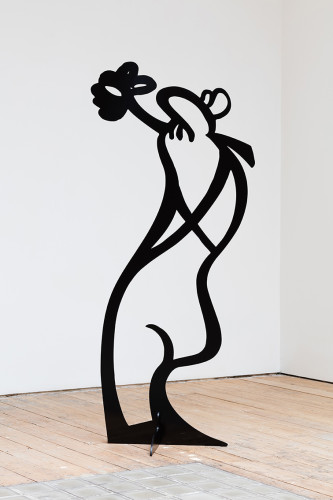
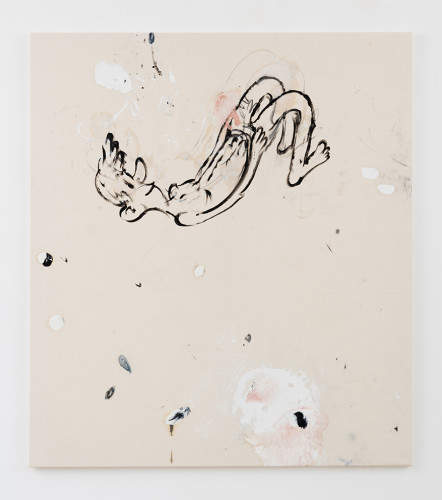
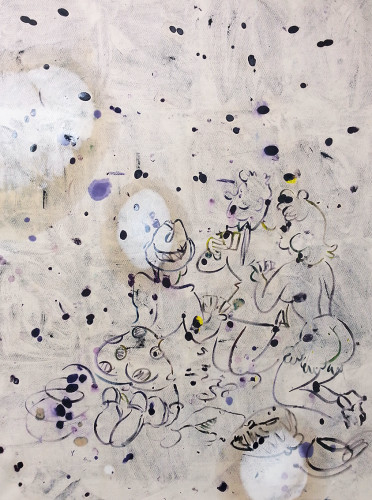
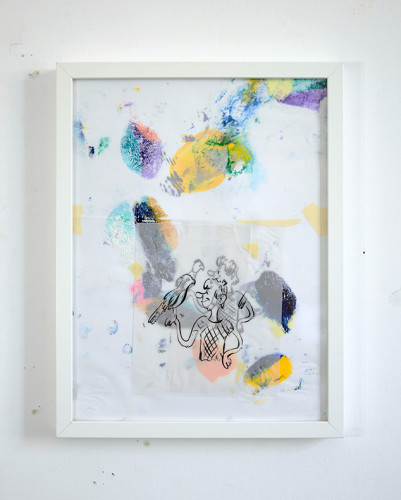
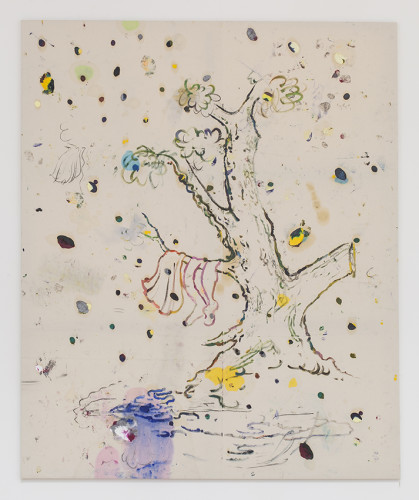
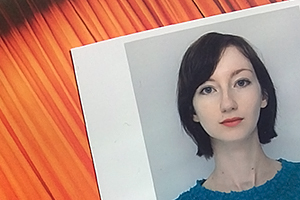
Comments are closed here.